What is a Vitamin C Serum?
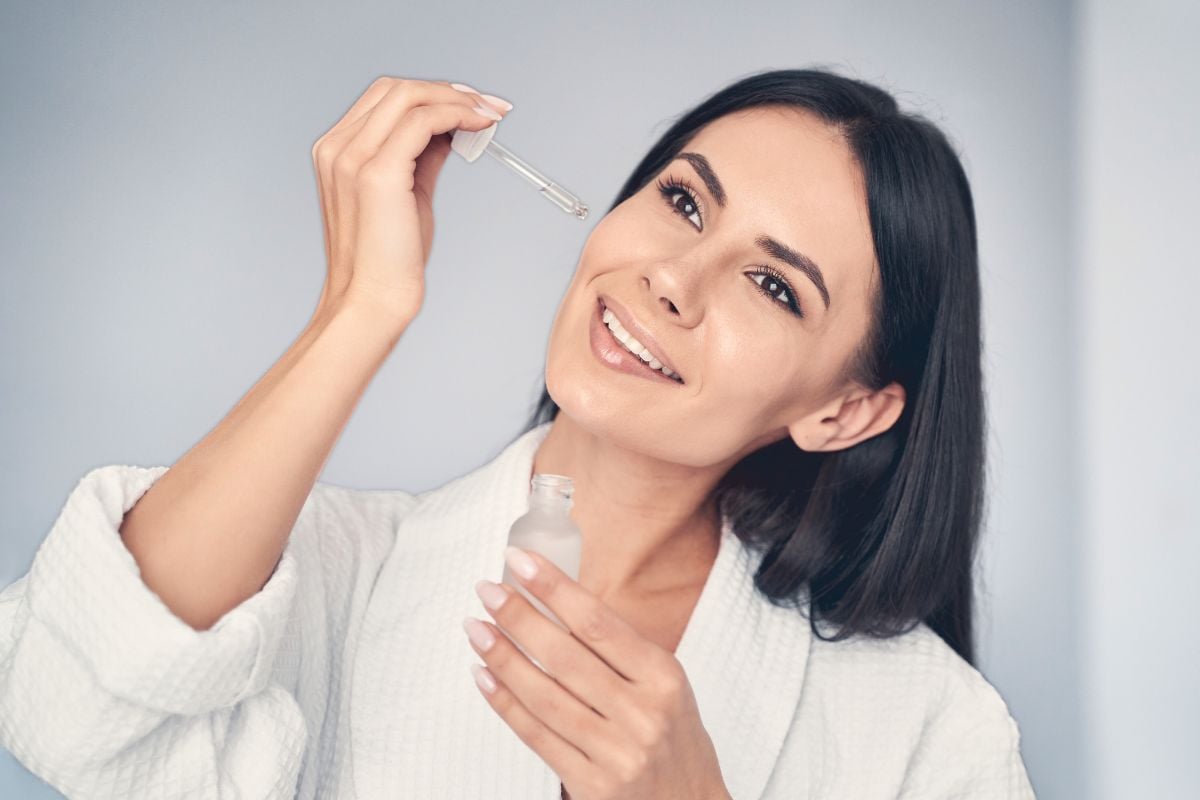
In the realm of skincare, few ingredients shine as brightly as vitamin C. Interestingly, this powerhouse antioxidant not only combats the effects of environmental stressors but also boasts impressive anti-aging and brightening properties. Remarkably, it can promote collagen production, even out skin tone, and even reduce inflammation. As a result, it’s no wonder that vitamin C has earned a permanent spot on the skincare stage.
This post begins by explaining why we need vitamin C in our skincare products. Undoubtedly, ingesting vitamin C-rich foods contributes to your overall health, but some research has shown it’s not a guaranteed pathway for vitamin C to saturate all layers of the skin. That’s where topical vitamin C serums step in to bridge the gap. Applying vitamin C serum directly to your skin ensures that its benefits are delivered precisely where you need them.
Then, we’ll explore the various types of vitamin C available and simplify the selection process for you. Next, we’ll examine how vitamin C serums work, the benefits they offer, and how to choose the right one for you.
So, if radiant, even-toned, and healthy skin is your goal – this examination of vitamin C serums is a fantastic starting point. Join us as we unravel the science, explore the benefits, and empower you to make informed choices for your skin’s health and vibrancy.
What Is A Vitamin C Serum?
As you may know, vitamin C is an essential nutrient that the human body cannot produce on its own, necessitating its acquisition through diet or supplements (source). Interestingly, topical vitamin C can take on various forms with differing levels of effectiveness. Keep in mind, when choosing the ideal vitamin C serum for your skin, it’s crucial to grasp the formulation process. Consider the following key factors in producing a vitamin C serum:
- stabilization
- formulation
- pH control.
First, stabilization is important because vitamin C may be susceptible to degradation when exposed to air and light. Hence, manufacturers often use opaque glass bottles. (Grasping this concept, my mother-in-law used to tell my husband when he was a kid to drink his orange juice before the “pills” – i.e., vitamin C – “flew away.”)
Second, in the formulation, vitamin C is generally combined with other ingredients that may help with skin texture and oily skin. These ingredients may include antioxidants, humectants (to retain skin moisture), and skin-soothing agents.
Third, as far as pH control is concerned, some forms of vitamin C are most effective in an acidic environment. Formulators adjust the serum’s pH to ensure that the vitamin C remains active (source).
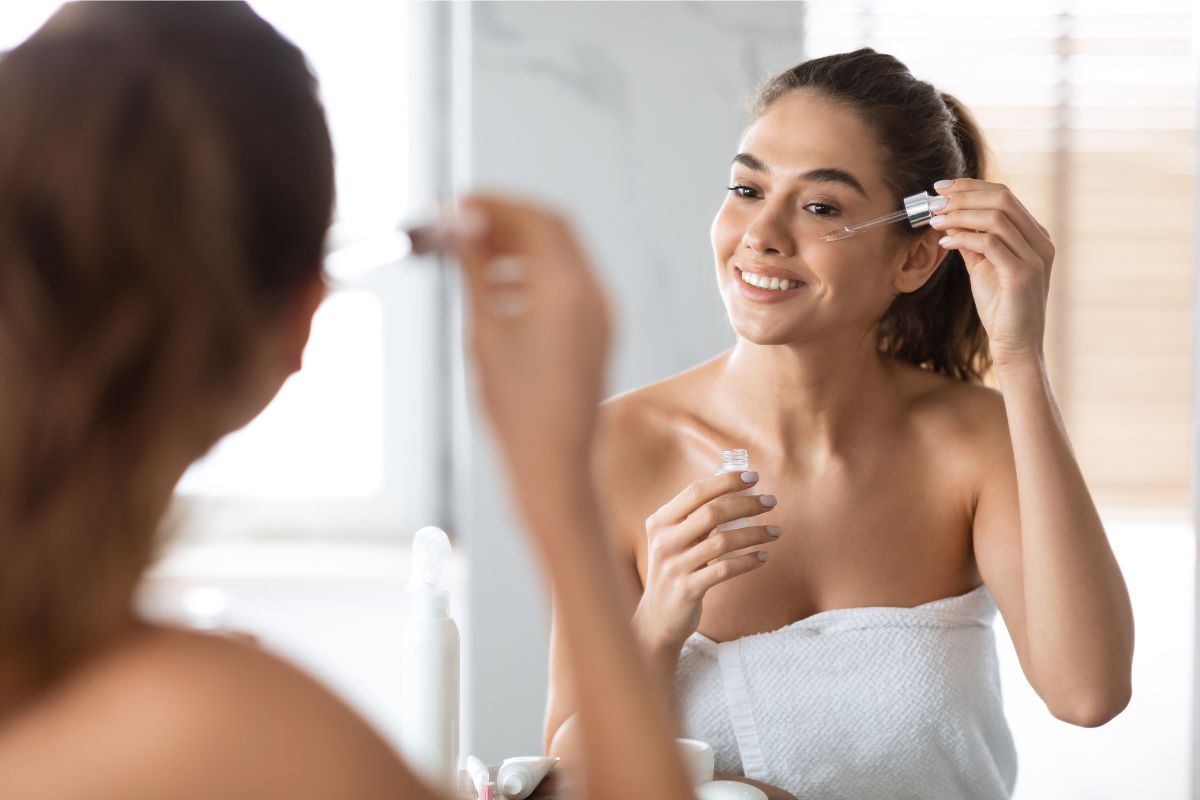
Some Common Forms Of Vitamin C
L-ascorbic Acid
It is the most studied and potent form but can be unstable when exposed to light, air, and heat. As you continue reading, we will delve into the various factors that can affect its stability.
Ascorbyl Glucoside
Remarkably, it exhibits superior stability and can remain in the body longer than ascorbic acid (source and source). Notably, even at lower concentrations, ascorbyl glucoside demonstrated effectiveness equal to high concentrations of active ascorbic acid.
Sodium Ascorbyl Phosphate (SAP)
It represents a stable precursor of vitamin C. In fact, this SAP study focused on its efficacy as an anti-inflammatory ingredient in acne treatments because it has a strong antimicrobial effect.
Magnesium Ascorbyl Phosphate (MAP)
It is a very stable and neutral pH version (source). This study suggested that it is also an effective anti-inflammatory alternative to acne treatments.
Ascorbyl Palmitate
It is stable and has a neutral pH (source).
Tetrahexyldecyl Ascorbate (THDC)
Interestingly, this study shows that when used with ascorbic acid, tetrahexyldecyl ascorbate supports the skin’s natural production of collagen and decreases photoaging scores. However, this study concluded that THDC required an additional stabilizing antioxidant to be effective once on human skin.
What Does A Vitamin C Serum Do?
So, let’s jump into the vitamin C serum benefits! Fortunately, the role of vitamin C in the maintenance of healthy skin has been well studied. For example, below are some highlights of research showing that topical vitamin C:
- helps to protect your skin from the stress caused by free radicals. It does this by donating electrons to neutralize them (source).
- helps to protect your skin from photoaging and other effects of both UVB and UVA radiation. This is important because UVA radiation destroys collagen, causes skin aging, and possibly melanomas. UVB radiation causes sunburn, the creation of free radicals, and skin cancer. Sunscreens block only 55% of the free radicals produced by UV exposure (source).
- influences lipid peroxidation, which, in turn, stimulates collagen that may help with signs of aging (source).
- acts as a depigmenting agent as it interrupts the production of melanin pigments (the main determinant of color) (source).
- is anti-inflammatory, which may help with acne and rosacea as well as promote wound healing and prevent hyperpigmentation. Pro-inflammatory cytokines are inhibited by vitamin C, which reduces potentially harmful inflammation (source).
Serum vs. Lotion
While a variety of vitamin C creams, serums, and transdermal patches are available, only serums contain active vitamin C in an almost colorless form (source). In addition, serums may offer higher concentrations of vitamin C and antioxidants than lotions.

What Is The “Best” Vitamin C Serum?
In my opinion, the best option for vitamin C serum is Crunchi I Am Bright Facial Vitamin C Serum.
Crunchi I Am Bright Facial Vitamin C Serum
Through consistent use, you will find that it effectively reduces the appearance of dark spots and post-acne marks, all the while providing sustained skin brightening via a time-release technology (ascorbyl glucoside lingers in the skin longer than some other forms of vitamin C (source)). Given that sun exposure depletes vitamin C reserves, the inclusion of this time-release feature is crucial.
In fact, Crunchi holds a special place as one of my favorite brands. As a result, I’ve dedicated a blog post titled Crunchi Non-Toxic Makeup Review to comprehensively detail all the reasons I like it so much.
Formulation notes: Crunchi I Am Bright Facial Vitamin C Serum incorporates kakadu plum for additional vitamin C and the hydrating antioxidant, snow mushroom extract. Moreover, it contains other star ingredients such as ferulic acid (a superstar antioxidant) and niacinamide (vitamin B3) that make it extra effective and my favorite vitamin C serum.
How to use: apply 1-2 pumps to a freshly cleansed and toned face and neck. Ideally, you can follow with a moisturizer like Daylight® Advanced Facial Cream.
Where to buy: Crunchi website (10% off on the 1st order of $50+ with the discount code ADVOCATE10)
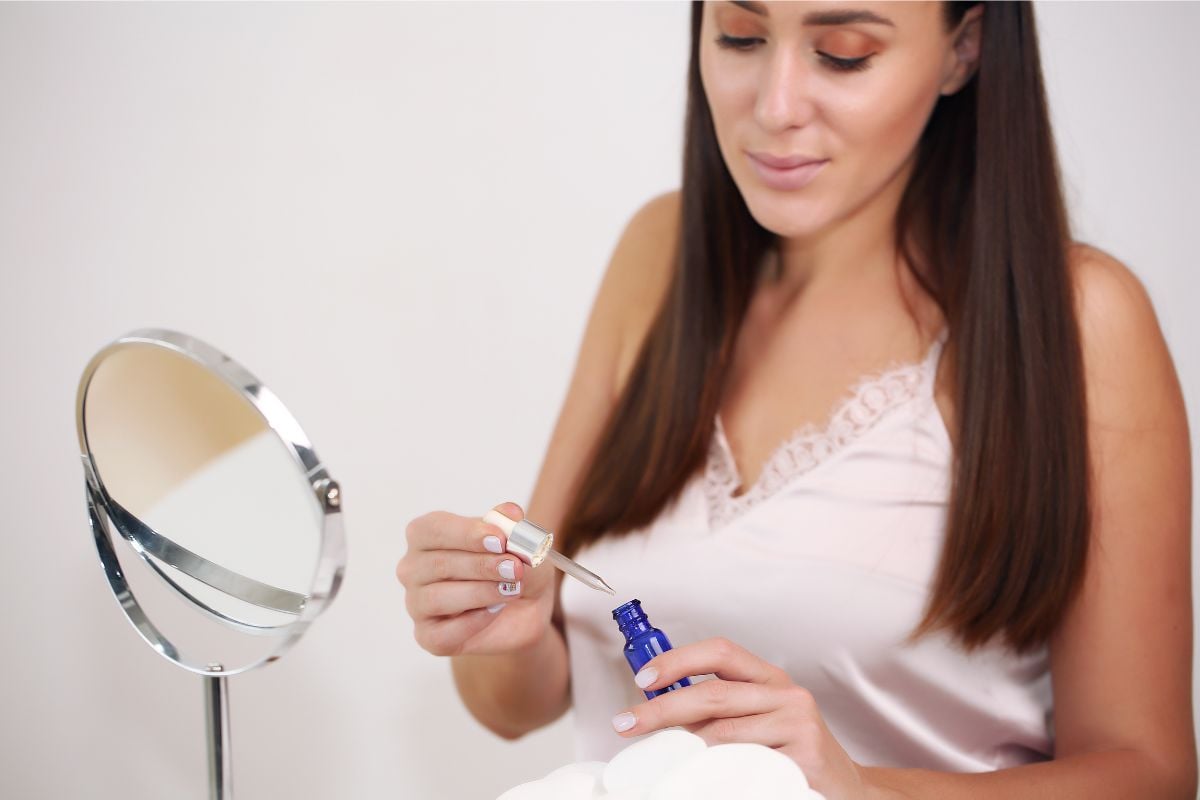
Which Vitamin C Serums Were “Better” But Not “Best”?
As requested, I have reviewed the following brands and found that they contain a select few ingredients that, in my opinion, may be concerning. In my experience, some of these ingredients may even go unnoticed by board-certified dermatologists!
“Almost Best” Vitamin C Serums
| PRODUCT | NOTES & CONCERNS |
| Beauty By Earth Hyperactive Anti-Aging® Vitamin C Serum (READ12 for 12% off) | Form of Vit C: Ascorbic Acid is a form of vitamin C used, which should be sufficiently stable in the presence of thioctic acid. However, sensitive skin may be irritated by the more acidic formula necessary for its stability. |
| Barefaced Liquid Gold | Form of Vit C: Ascorbic Acid is less stable in a formula without other acids to lower the pH. |
| Dime Hyper Glow Serum | Form of Vit C: Ascorbic Acid appears to be stable in this formula in the presence of other acids. It should be noted that a synthetic form of Vitamin E was not disclosed in their full ingredient list. Sodium Metabisulfite is a preservative used that they labeled as “gentle and healthy” which I would not agree with given its corrosive nature (concern for irritation) and because there are other more ideal preservatives available. Personally, I am skeptical about Dime brand after reviewing the wording and vagueness in some of their ingredient lists. For these reasons, I have chosen not to use this product. |
“Better” Vitamin C Serums
| PRODUCT | NOTES & CONCERNS |
| Beautycounter All Bright Serum | Form of Vit C: Tetrahexyldecyl Ascorbate, Bis-Glyceryl Ascorbate ⚠️Phenoxyethanol is effective but not an ideal preservative. Read more about this in my Phenoxyethanol In Skin Care blog post. |
| Glossier Super Glow Vitamin C Brightening Face Serum | Form of Vit C: Uses only a low concentration of Magnesium Ascorbyl Phosphate which may not be as effective. Dimethicone is a silicone-based ingredient that temporarily fills lines in the skin to appear smoother but does not actually benefit the skin. I do not like to see it as a prominent ingredient as it only provides an illusion of helping your skin. Read more here. |
| Peter Thomas Roth Potent-C Power Serum | Form of Vit C: Tetrahexyldecyl Ascorbate ⚠️Tocopheryl Acetate can be associated with hydroquinone contamination (read more here) ⚠️Phenoxyethanol is effective but not an ideal preservative. Read more about this in my Phenoxyethanol In Skin Care blog post. ⚠️Contains sodium benzoate, which in the presence of vitamin C may form carcinogenic benzene (read more here) |
| Cocokind Vitamin C Glow Serum | Form of Vit C: Ascorbyl Glucoside ⚠️Contains sodium benzoate, which in the presence of vitamin C may form carcinogenic benzene (read more here) |
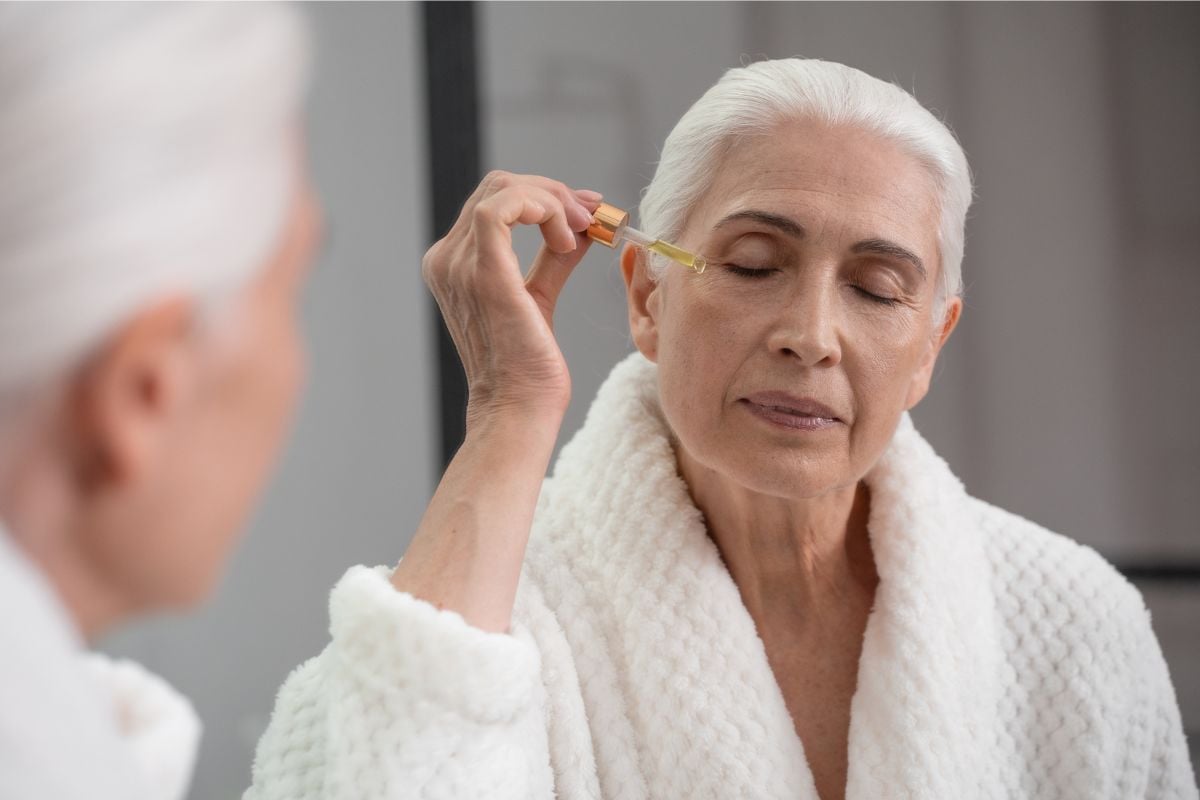
Which Vitamin C Serums Are Not Recommended?
In my opinion, some serums contain ingredients I would not recommend in a vitamin C serum:
Phenoxyethanol
Though effective, it’s not an ideal preservative. Read more about this in my Phenoxyethanol In Skin Care blog post.
Ethoxylated ingredients/ PEGS/ Polysorbates
The United States Food and Drug Administration (FDA) has identified carcinogenic 1,4-dioxane as a potential contaminant in ethoxylated ingredients. Read more about this in my blog post Hidden Ingredients in Cosmetics.
Butylated Hydroxytoluene (BHT)
a synthetic antioxidant, BHT is used to improve the stability of cosmetic products, pharmaceuticals, fat-soluble vitamins, biomaterials, petroleum products, plastics, and synthetic rubbers. It also serves as an anti-skinning agent in paints and inks. It is a very controversial ingredient because of its suspected potential hormone-disrupting (source) and carcinogenic impact (source).
“Bad” Vitamin C Serums
| PRODUCT | NOTES & CONCERNS |
| My Beauty Care Naturals Gorgeous Glow Vitamin C Serum | Form of Vit C: Ascorbic Acid ❌Polyoxyethylene sorbitan monostearate is a PEG/ ethoxylated ingredient (see above) ⚠️Phenoxyethanol (see above) |
| The OrdinaryVitamin C Suspension 23% + HA Spheres 2% | Form of Vit C: Ascorbic Acid ❌BHT (description above) ⚠️Acrylates/Ethylhexyl Acrylate Crosspolymer: It is possible for acrylates to be allergens. The following are not well studied, and a component of these copolymers, styrene, is banned in the EU from use in cosmetics (and soon to be in California as well): ⚠️Ethylene/Propylene/Styrene Copolymer ⚠️Butylene/Ethylene/Styrene Copolymer |
| Drunk Elephant C-Firma Fresh Vitamin-C Day Serum | Form of Vit C: 15% Ascorbic Acid ❌Laureth-23 is an ethoxylated ingredient (description above) ⚠️Phenoxyethanol (description above) ⚠️Contains sodium benzoate, which in the presence of vitamin C may form carcinogenic benzene (read more here) |
| Dermalogica BioLumin-C Vitamin C Serum | Form of Vit C: Ascorbyl Methylsilanol Pectinate ❌Polysorbate 20 is an ethoxylated ingredient (description above) ⚠️Phenoxyethanol (description above) ⚠️Limonene The following belong to the group of acrylates. Though rare, an allergic reaction is possible: ⚠️Polyacrylate-13 ⚠️Glyceryl Polyacrylate |
| Skin Better ScienceAlto Defense Serum | Form of Vit C: Tetrahexyldecyl Ascorbate appears to have other antioxidants that may stabilize it, but the concentration is not disclosed, and it has 11 other ingredients before it on the ingredient list. ❌Several ethoxylated ingredients (description above) ⚠️Phenoxyethanol (description above) |
| Dynamic Supreme Prestige Formula Vitamin C Serum Set | Form of Vit C: Ascorbic Acid ❌Laureth-23 is an ethoxylated ingredient (description above) ⚠️Phenoxyethanol (description above) |
“Worst” Vitamin C Serums
In my opinion, the following products contained the worst ingredient options for vitamin C serums. In addition to the ingredients mentioned above, here is an explanation of other concerning ingredients found in this category.
Synthetic Colors/ Dyes are made from petroleum. Besides the residues of heavy metals, they may contain the residues of carcinogenic and/or endocrine-disrupting by-products of petroleum. In addition, some dyes are linked to carcinogenicity, genotoxicity, and hypersensitivity.
Fragrance / Perfume / Aromas are a mixture of undisclosed ingredients. Thus, the International Fragrance Association (IFRA) has stated that over 3,000 ingredients are used to create fragrance mixes, and many of these ingredients are known to cause allergic reactions, endocrine (hormone) disruption, and cancer (source and source). Learn more by checking out my blog post Is Natural Fragrance Safe?.
Dimethicone, although not harmful, acts as a temporary filler. As a result, I prefer not to see it in high concentrations as it only provides an illusion of helping your skin. Read more here.
PRODUCT | NOTES & CONCERNS |
| Olehenriksen Truth Serum Hydrating Vitamin C Serum | Form of Vit C: Sodium Ascorbyl Phosphate ❌Several ethoxylated ingredients (described in the section above) ❌Fragrance and Aroma (described in the section above) ❌Yellow 6 Dye (see above) ⚠️Dimethicone (see above) ⚠️Phenoxyethanol (described in the section above) ⚠️Limonene, Linalool ⚠️Contains sodium benzoate, which in the presence of vitamin C may form carcinogenic benzene (read more here) |
| Lancôme Rénergie H.C.F. Triple Serum | Form of Vit C: 3-O-Ethyl-Ascorbic Acid, and it is low on the list of ingredients. ❌Several ethoxylated ingredients (description in the section above) ❌Octocrylene: endocrine-disrupting and allergenic potential ❌Perfume/ Fragrance (described in the section above) ⚠️Limonene ⚠️Contains sodium benzoate, which in the presence of vitamin C may form carcinogenic benzene (read more here) |
| Estee Lauder Perfectionist Pro Serum | Form of Vit C: Ascorbyl Glucoside ❌BHT (described in the section above) ❌Several ethoxylated ingredients (described in the section above) ❌Fragrance is a mixture of undisclosed ingredients (described in the section above) ⚠️Phenoxyethanol (described in the section above) ⚠️Dimethicone (described above) ⚠️Contains sodium benzoate, which in the presence of vitamin C may form carcinogenic benzene (read more here). |
| SkinCeuticals C E Ferulic | Form of Vit C: Ascorbic Acid ❌Triethanolamine functions as a surfactant or pH adjuster. Per the European Chemicals Agency (ECHA), triethanolamine (TEA) is suspected of damaging fertility or the unborn child. ❌Laureth-23 is an ethoxylated ingredient (described in the section above). ⚠️Phenoxyethanol is a preservative (described in the section above). |
Conclusion About Vitamin C Serum
Quality Vitamin C Serums Have The Potential To Provide Impressive Results.
In this post, first, we’ve explored the various common forms of vitamin C available and assessed their stability levels. Second, we’ve delved into the principles governing the formulation and packaging of a high-quality vitamin C serum. Furthermore, we’ve meticulously reviewed and ranked several vitamin C serums available on the market, identifying potentially concerning ingredients within them.
Currently, I am using Crunchi I Am Bright Facial Vitamin C Serum (10% off on the 1st order of $50+ with the discount code ADVOCATE10), which I love. For a comprehensive overview of my entire skincare routine and my other preferred product choices, please refer to my blog post titled Best Non-Toxic Anti-Aging Skin Care.
In conclusion, vitamin C serums offer a multitude of benefits for your skin if formulated correctly. Yet, when it comes to integrating vitamin C serums into your skincare routine, there are several vital considerations to keep in mind. With proper care and attention to safety, you can harness the power of vitamin C to achieve radiant and healthy-looking skin. View more of my blog posts dedicated to beauty and self-care products here!

Download The Free Guide!
5 Powerful Steps To A Non-Toxic Home
Join our informed consumer community and get our free guide the “5 Powerful Steps To A Non-Toxic Home”.

 Written by
Written by 

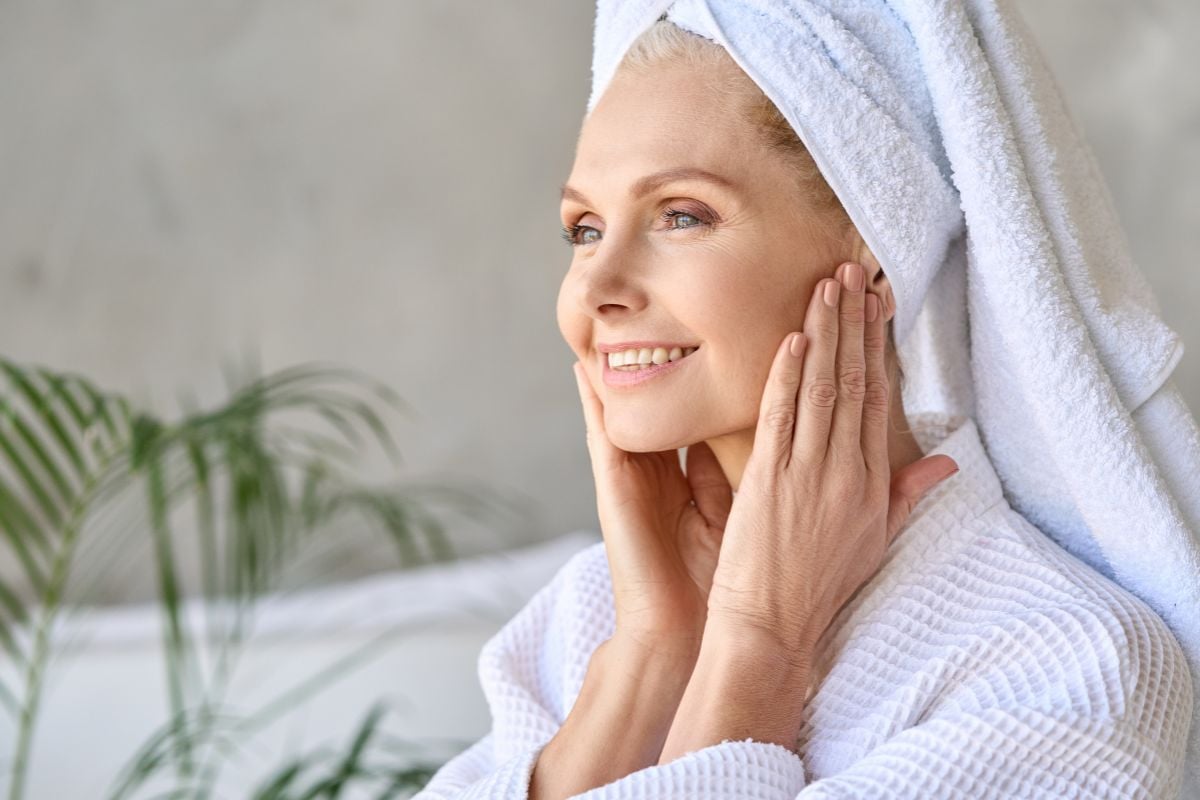
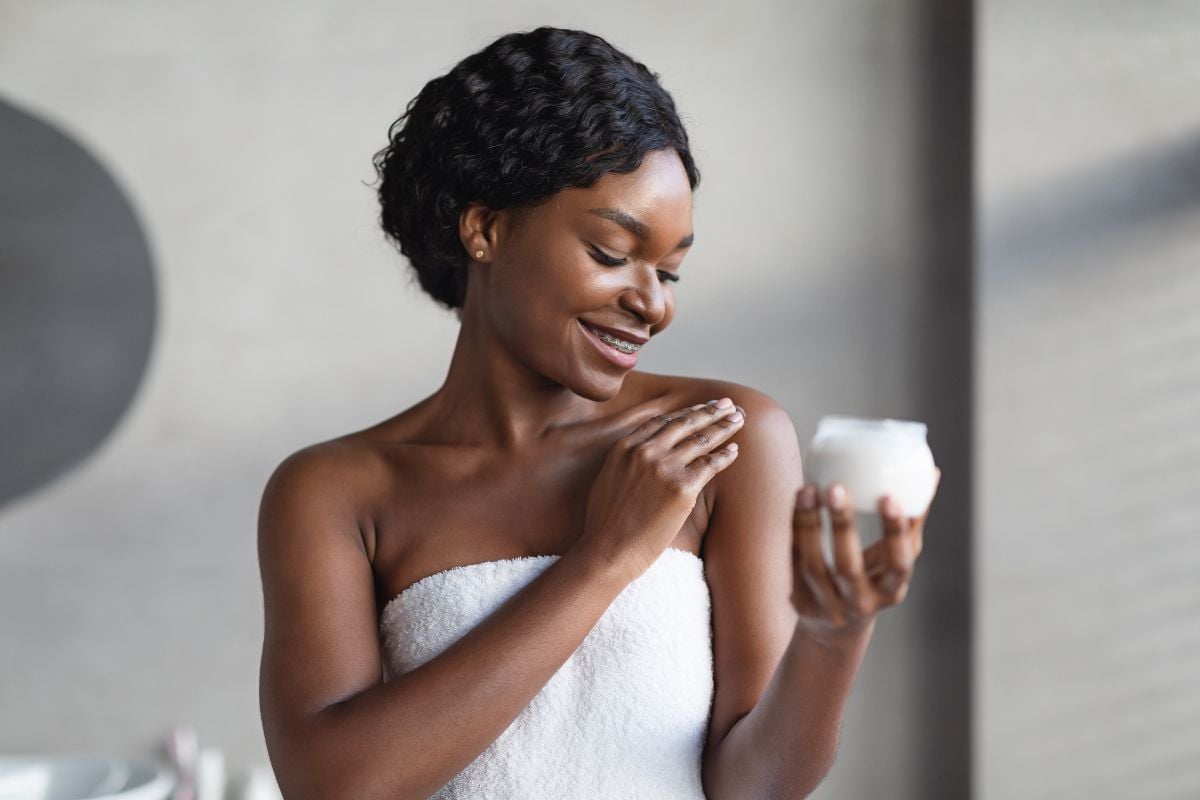
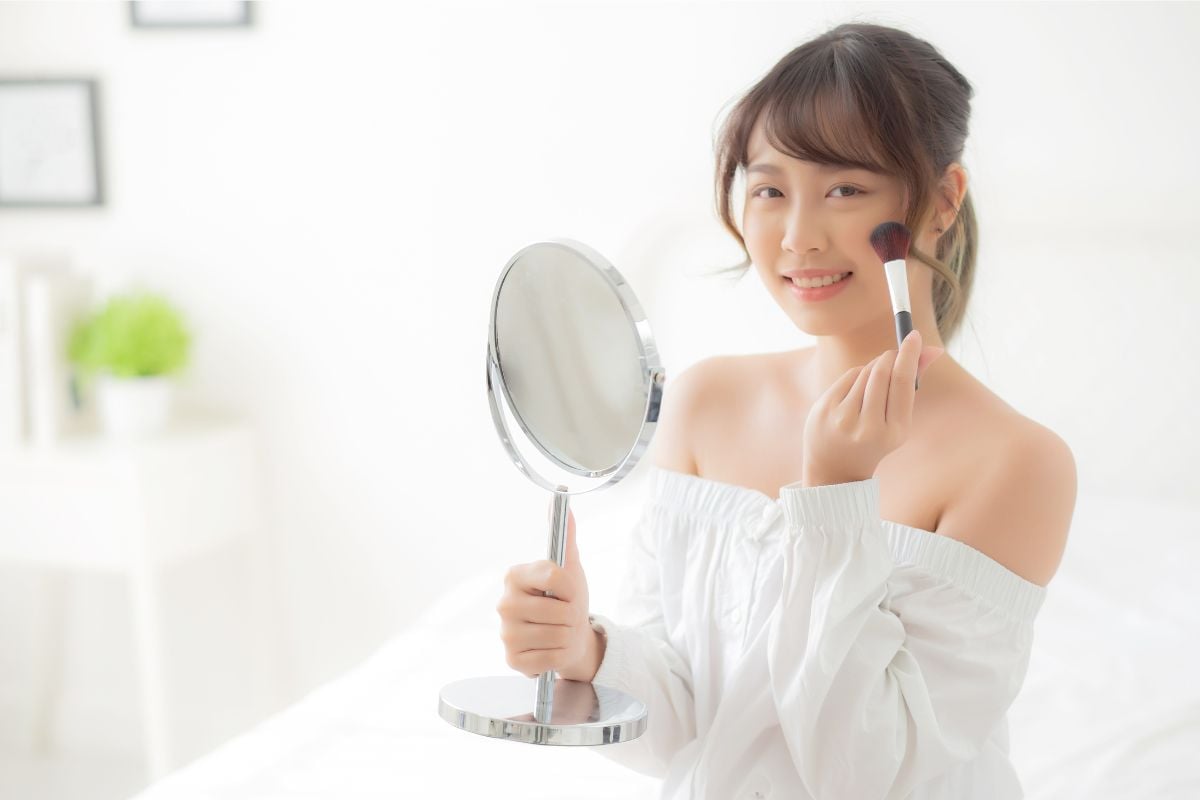
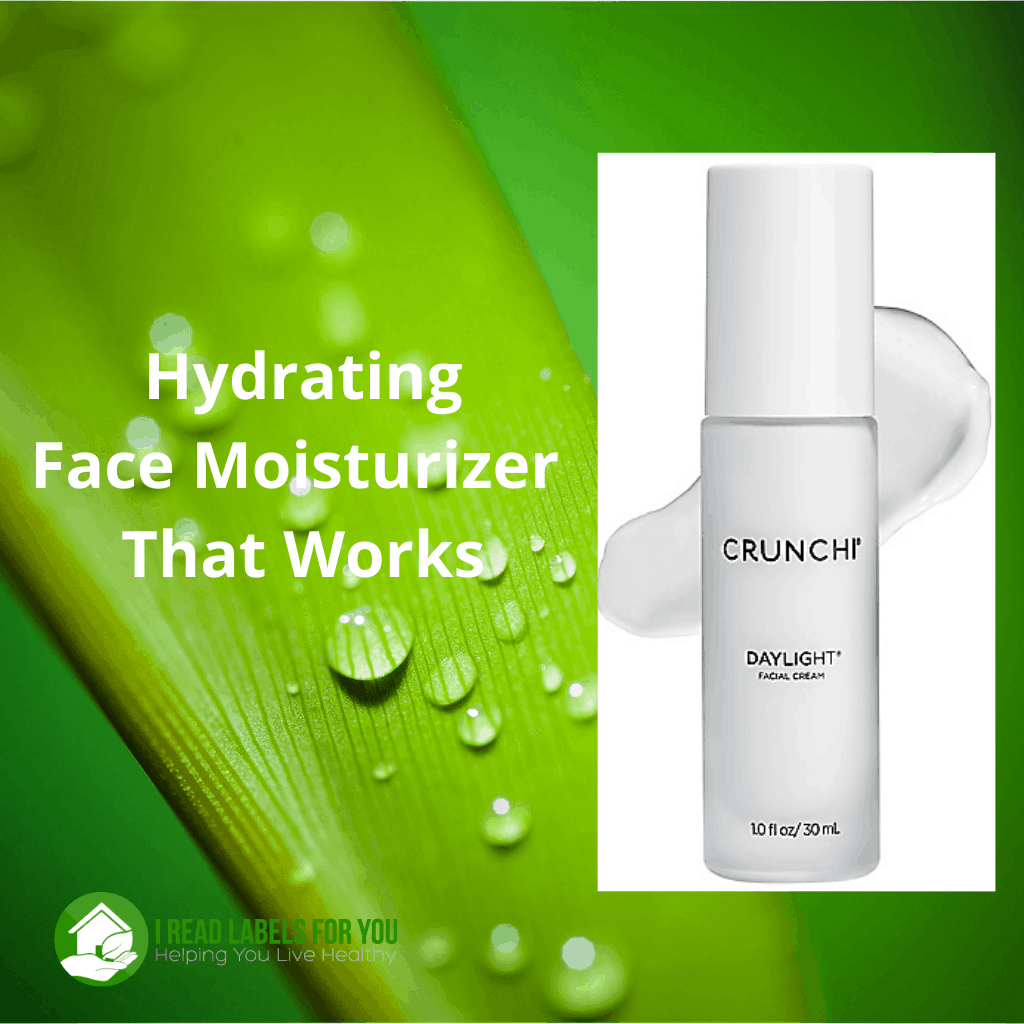
Thanks for also talking about the kinds of synthetic components that I should watch out for when planning to make use of Vitamin C serums. I’m interested in looking for a good clinic that offers that kind of treatment because I want to be a lot more mindful of my skin’s health. I seem to have been neglecting that part of my health these past few years so it will be best to start with some course correction.